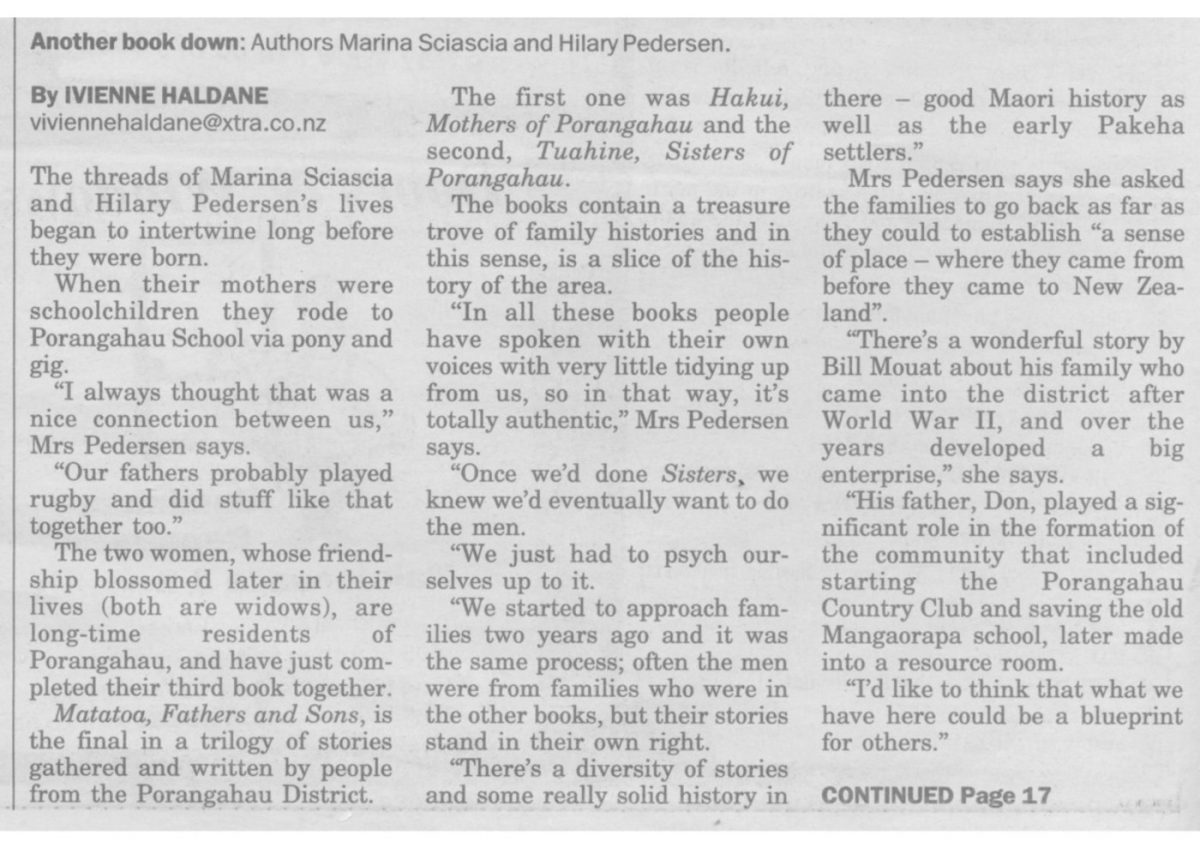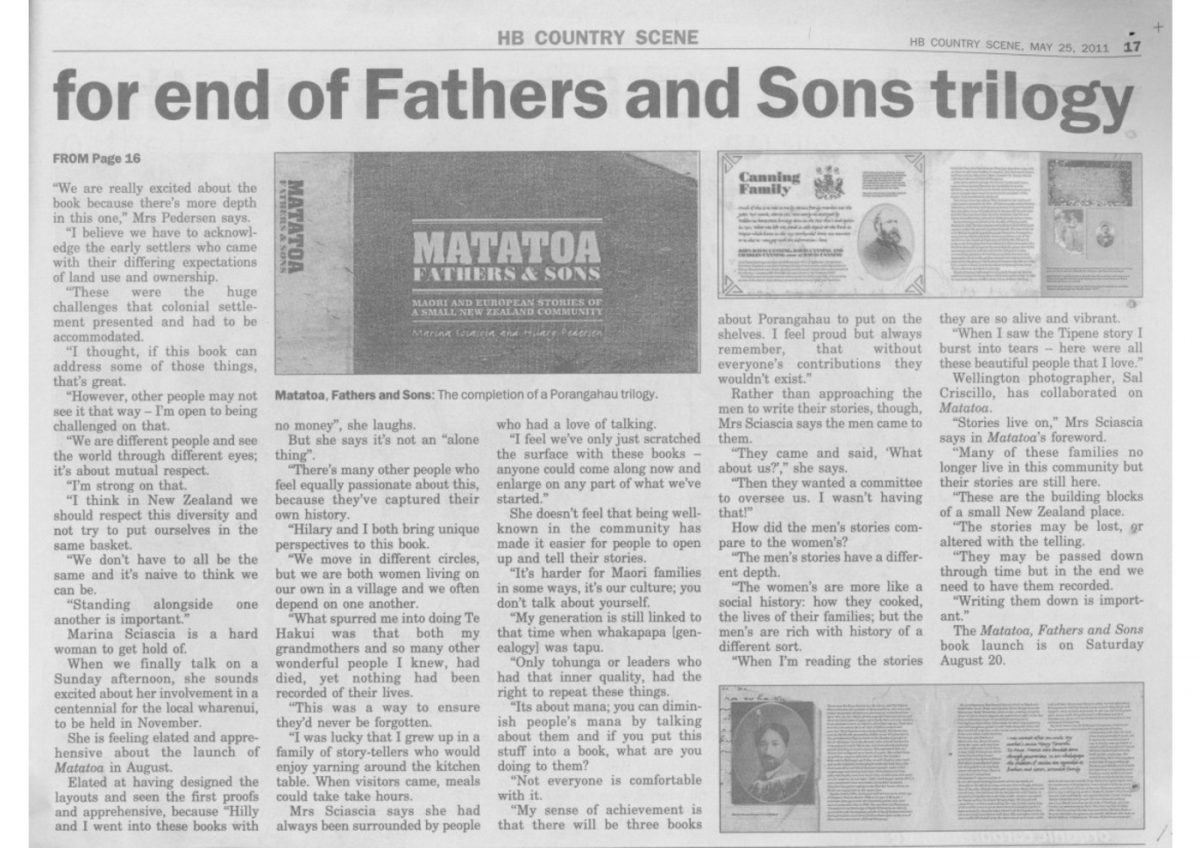“We are really excited about the book because there’s more depth in this one,” Mrs Pedersen says.
“I believe we have to acknowledge the early settlers who came with their differing expectations of land use and ownership.
“These were the huge challenges that colonial settlement presented and had to be accommodated.
“I thought, if this book can address some of those things, that’s great.
“However, other people may not see it that way – I’m open to being challenged on that.
“We are different people and see the world through different eyes; it’s about mutual respect.
“I’m strong on that.
“I think in New Zealand we should respect this diversity and not try to put ourselves in the same basket.
“We don’t have to all be the same and it’s naive to think we can be.
“Standing alongside one another is important.”
Marina Sciascia is a hard woman to get hold of.
When we finally talk on a Sunday afternoon, she sounds excited about her involvement in a centennial for the local wharenui, to be held in November.
She is feeling elated and apprehensive about the launch of Matatoa in August.
Elated at having designed the layouts and seen the first proofs and apprehensive, because “Hilly and I went into these books with
no money”, she laughs.
But she says it’s not an “alone thing”.
“There’s many other people who feel equally passionate about this, because they’ve captured their own history.
“Hilary and I both bring unique perspectives to this book.
“We move in different circles, but we are both women living on our own in a village and we often depend on one another.
“What spurred me into doing Te Hakui was that both my grandmothers and so many other wonderful people I knew, had died, yet nothing had been recorded of their lives.
“This was a way to ensure they’d never be forgotten.
“I was lucky that I grew up in a family of story-tellers who would enjoy yarning around the kitchen table. When visitors came, meals could take take hours.
Mrs Sciascia says she had always been surrounded by people who had a love of talking.
“I feel we’ve only just scratched the surface with these books – anyone could come along now and enlarge on any part of what we’ve started.”
She doesn’t feel that being well-known in the community has made it easier for people to open up and tell their stories.
“It’s harder for Maori families in some ways, it’s our culture; you don’t talk about yourself.
“My generation is still linked to that time when whakapapa (genealogy) was tapu.
“Only tohunga or leaders who had that inner quality, had the right to repeat these things.
“Its about mana; you can diminish people’s mana by talking about them and if you put this stuff into a book, what are you doing to them?
“Not everyone is comfortable with it.
“My sense of achievement is that there will be three books about Porangahau to put on the shelves. I feel proud but always remember, that without everyone’s contribution they wouldn’t exist.
Rather than approaching the men to write their stories, though, Mrs Sciascia says the men came to them.
“They came and said, ‘What about us?’,” she says.
“Then they wanted a committee to oversee us. I wasn’t having that!”
How did the men’s stories compare to the women’s?
“The men’s stories have a different depth.
“The women’s are more like a social history: how they cooked, the lives of their families; but the men’s are rich with history of a different sort.
“When I’m reading the stories they are so alive and vibrant.
“When I saw the Tipene story I burst into tears – here were all these beautiful people that I love.”
Wellington photographer, Sal Criscillo, has collaborated on Matatoa.
“Stories live on,” Mrs Sciascia says in Matatoa’s foreword.
“Many of these families no longer live in this community but their stories are still here.
“These are the building blocks of a small New Zealand place.
“The stories may be lost, or altered with the telling.
“They may be passed down through time but in the end we need to have them recorded.
“Writing them down is important”
The Matatoa, Fathers and Sons book launch is on Saturday August 20.
Photo caption – Matatoa, Fathers and Sons: The completion of a Porangahau trilogy














Do you know something about this record?
Please note we cannot verify the accuracy of any information posted by the community.